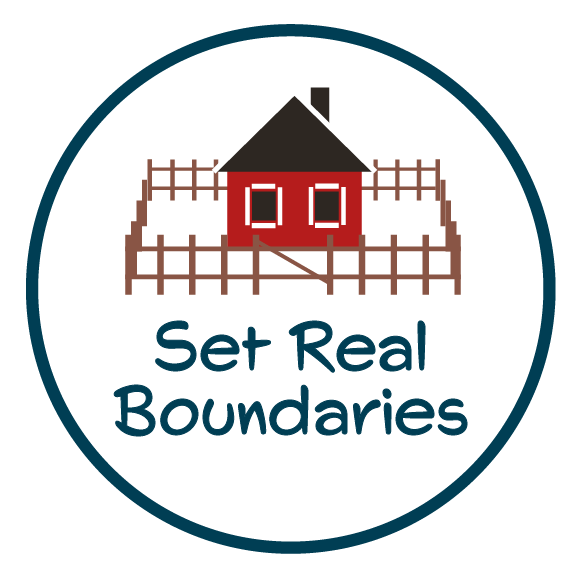
Want to Know the Best Way to Reduce Overwhelm in Your Life?
I know you want to know the answer!
Since I don’t think you’ll like the answer, I promise to give you some strategies to help make it easier.
The answer is SET REAL BOUNDARIES.
These words may come to mind when you hear the word “boundaries”:
-
limit
-
confining
-
barrier
-
restricting
-
hindrance
What if I said a “boundary” can also be a:
-
frontier
-
frame
-
range of experience
-
connection
-
span of control
Your tea or coffee mug has a boundary. If you try to fill it beyond the top, you make a mess, which might make you late for an appointment. A desk drawer has finite capacity. Once you reach it, the drawer is hard to close and you won’t be able to find office supplies quickly. Each day has only 24 hours. If you fill it with all of the tasks you’re required to do as an adult, you have a set amount of time left for activities you really want to do. Your choice is to do everything you want to and lose sleep, or get an adequate amount of sleep and delay or delete some desired activities.
Bottomline: Boundaries are necessary & helpful.
I had a client who reframed boundaries this way:
The first step of all creation is to define, to separate. If everything is monotone or the same, then there can be no creation or expression. The power of all action comes from the inherent pent up energy hidden in contrast. In order to access its power, you have to define (become aware of) and experience (or express) the contrast. The processes of defining and experiencing contrasts is the essence of boundaries. Setting boundaries is the act (or art) of accessing (or embracing) the hidden potential that lies with the contrasts we chose to illuminate. I need to practice the art of expressing contrasts in order to unlock and experience the hidden potential of all the life around me!
How empowering is that!
PHYSICAL PARAMETERS
Home. Car. Office.
These physical spaces are boundaries unto themselves and also have additional borders within.
If you want to easily navigate your space, find items when you need them, and create a home or office you love, it’s important to establish and maintain parameters.
There are three ways you can intentionally set cut-off points:
-
categories: a multi-purpose cleaner rather than different types of cleaning products for each kind of surface
-
quantity: two sets of sheets per bed
-
people: let family and friends know that all in your household prefer consumable gifts or experiences rather than physical items
For example, if an office (whether business or home) has space for a desk, four-drawer file cabinet, and four-shelf bookcase, then the number of papers you can have in the office is the number that fit into the file cabinet (about 18,000 sheets). If you need to file more papers than fit in the one file cabinet, you may need to get a smaller desk or a narrower bookcase in order to accommodate another file cabinet. However, if you have more books than will fit into the bookcase, you might eliminate the file cabinet in favor of a desk that has file drawers so you can add a second set of bookshelves. What you do depends on your needs. And these may change over time, so your office might be perfect now, but you may have to reconfigure your environment in the future.
TIME BORDERS
As mentioned above, there is already one limitation related to your schedule that can’t be changed: you only have 24 hours each day. Outside of that, there are a number of boundaries you can use to optimize your time. They are all related to modifying what you do (or don’t do) and the length of time allotted. Check 7 Crucial Tactics for Task Management for specific ideas about schedule and task management.
Do you find it more challenging to stay within Physical Parameters or Time Borders? Share your thoughts. You’re not alone and others will be thrilled to know they aren’t “the only ones”!



